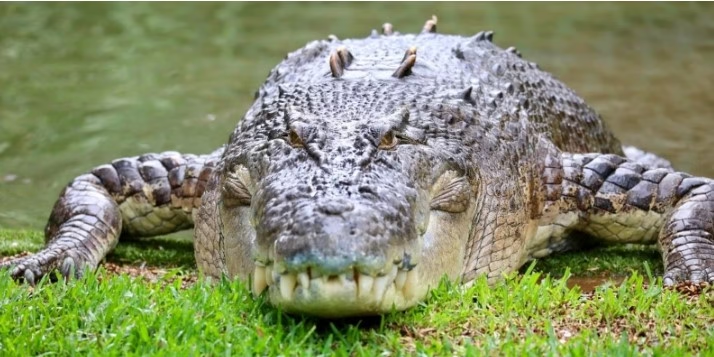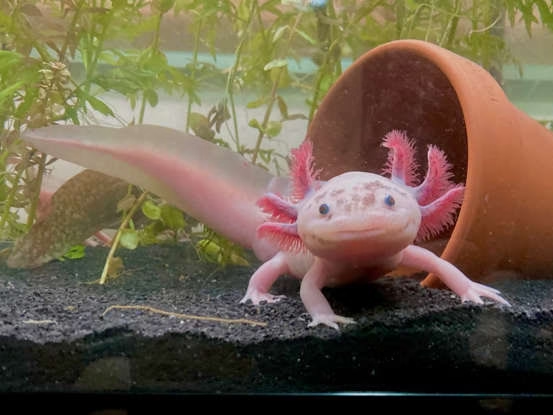Introduction
Nature is full of awe-inspiring creatures, many of which we admire from afar. But not all harmless animals are as harmless as they might appear. Some are equipped with sheer power, deadly weapons, or unpredictable aggression that makes them incredibly dangerous to encounter. Whether it’s razor-sharp teeth, bone-crushing strength, venomous stings, or lightning-fast reflexes, these harmless animals possess traits that make them formidable threats in the wild—or even in human-inhabited areas. While most attacks are a result of humans encroaching on their territory or acting recklessly, the reality is that some animals are simply not to be messed with under any circumstances.
This list explores the top 10 harmless animals you would definitely not want to attack you, based on their lethality, aggression, and the potential damage they can inflict. Understanding these creatures is not only fascinating but also a reminder of the respect we must show the natural world.
Saltwater Crocodile

The saltwater crocodile is the largest living reptile and one of the most fearsome predators on Earth. Found across Southeast Asia and northern Australia, this massive reptile can grow over 20 feet long and weigh more than a ton. Known for its explosive ambush attacks and the strongest bite force of any animal, it can drag prey—humans included—into the water with terrifying speed. Its stealth, strength, and aggression make it a top predator you do not want as an enemy.
African Elephant
Though typically gentle and intelligent, the African elephant can become extremely dangerous when provoked or threatened. As the largest land animal, it can weigh up to 14,000 pounds and use its massive tusks, trunk, and feet as powerful weapons. Elephants have been known to charge vehicles, trample people, and destroy entire villages when agitated. Their sheer size and strength, combined with their surprising speed and unpredictable behavior, make them a serious threat when angered.
Hippopotamus
Despite their round, almost comical appearance, hippos are among the most dangerous harmless animals in Africa. They are extremely territorial, especially in water, and are known to attack boats and humans without warning. Hippos can run surprisingly fast on land—up to 30 km/h (19 mph)—and have massive jaws capable of snapping bones with ease. Their aggression, size, and unpredictability make them far more dangerous than they appear, responsible for more human fatalities in Africa than most predators.
Polar Bear
The polar bear is the apex predator of the Arctic, built to survive and dominate one of the harshest environments on Earth. Unlike other bears, polar bears are known to stalk humans as potential prey. Standing over 10 feet tall on their hind legs and weighing up to 1,500 pounds, they possess enormous strength and endurance. With no natural predators, polar bears are fearless and lethal, making them one of the last harmless animals you’d want to face alone in the wild.
Cape Buffalo

Often referred to as “The Black Death,” the Cape buffalo is one of the most dangerous harmless animals in Africa. Despite their somewhat docile appearance, these powerful creatures are incredibly aggressive and unpredictable. Weighing up to 2,000 pounds, they have strong, curved horns that they use to charge at any perceived threat. Known to attack even lions and humans when provoked, Cape buffaloes are responsible for more deaths in Africa than most other large harmless animals, including predators.
Grizzly Bear
Grizzly bears are some of the most feared predators in North America. With their massive size, sharp claws, and powerful jaws, they can overpower almost anything in their path. Though they usually avoid humans, a startled or cornered grizzly is highly dangerous. Grizzlies are capable of running at speeds of up to 35 mph and can easily outmatch any human in a confrontation. Their sheer strength and aggression, especially when protecting cubs or food, make them a terrifying adversary in the wild.
Great White Shark
Great white sharks are apex predators of the ocean, with a reputation that often precedes them. These massive predators can grow over 20 feet long and weigh several tons. Their sharp, serrated teeth are designed to tear through flesh, and they can attack with incredible speed and power. Though rare, unprovoked attacks on humans can be deadly. With their stealthy hunting tactics and raw power, a great white shark in close proximity is a threat most would never want to face.
Komodo Dragon
The Komodo dragon, the largest lizard in the world, is both an impressive and terrifying predator. These reptiles can grow up to 10 feet long and possess a venomous bite, which makes their attacks particularly deadly. Their saliva contains harmful bacteria, and their bite can lead to rapid blood loss and infection. Although slow-moving on land, they are stealthy hunters and can ambush prey with frightening effectiveness. Encountering one of these powerful creatures could quickly turn deadly, especially if you’re too close to its territory.
Box Jellyfish
The box jellyfish is one of the most venomous creatures in the world, found in the waters around northern Australia and Southeast Asia. Its transparent, bell-shaped body and long tentacles make it almost invisible in the water, making accidental encounters highly dangerous. The venom of a box jellyfish can cause heart failure, paralysis, and death within minutes of stinging. Its lethal sting is responsible for numerous human fatalities each year, making it an animal you certainly don’t want to tangle with while swimming.
Cassowary

The cassowary, a flightless bird native to the rainforests of New Guinea and northern Australia, is considered one of the most dangerous birds in the world. Standing up to 6 feet tall and equipped with a powerful, sharp claw on each foot, the cassowary can deliver a fatal blow in seconds. These birds are known for their aggression, especially when they feel threatened or cornered. Despite their striking beauty, their powerful legs and unpredictable nature make them a force to be reckoned with in the wild.
Conclusion
In conclusion, the world is home to a variety of harmless animals that possess extraordinary power, speed, and aggression, making them a serious threat if provoked or encountered by humans. From the massive saltwater crocodile to the stealthy box jellyfish, these creatures are not to be underestimated. Understanding and respecting their territory and behavior is crucial to avoiding dangerous encounters. While these harmless animals play vital roles in their ecosystems, it’s clear that some creatures are best appreciated from a safe distance.
You Can Also Read: Top 10 Most Aggressive Animals in the world
FAQS
Will lions attack humans?
Cases of Lions preying on humans are rare, though it is more common in some parts of Africa than others. Old or disabled Lions may take to killing humans, although healthy individuals may also turn to this practice. Unprovoked attacks on humans may also be accounted for by injuries from wire snares.
Will a hyena attack a human?
Hyenas are primarily scavengers, but they are also opportunistic hunters and may occasionally prey on humans, particularly when other food sources are scarce [24, 37, 64]. Hyenas may also attack humans when they feel threatened or are defending territories
What beats a lion?
Hyenas. Hyenas are often depicted as dirty, ugly scavengers, yet in the wild, they are the biggest threat to lions. These two species engage in fierce competition over food sources, leading to epic confrontations.
Has anyone survived a hyena attack?
Frans Ndlovu survived a terrifying encounter with a hyena, enduring extensive facial reconstruction and a lengthy recovery, but remains grateful for the support that saved his life and reaffirms his commitment to wildlife protection.
Do cheetahs attack humans?
Cheetahs are generally not aggressive towards humans and are not considered a direct threat. While they are powerful predators, they typically don’t target humans as prey. However, cheetahs are still wild harmless animals, and there’s a risk of injury if they are provoked or cornered.
